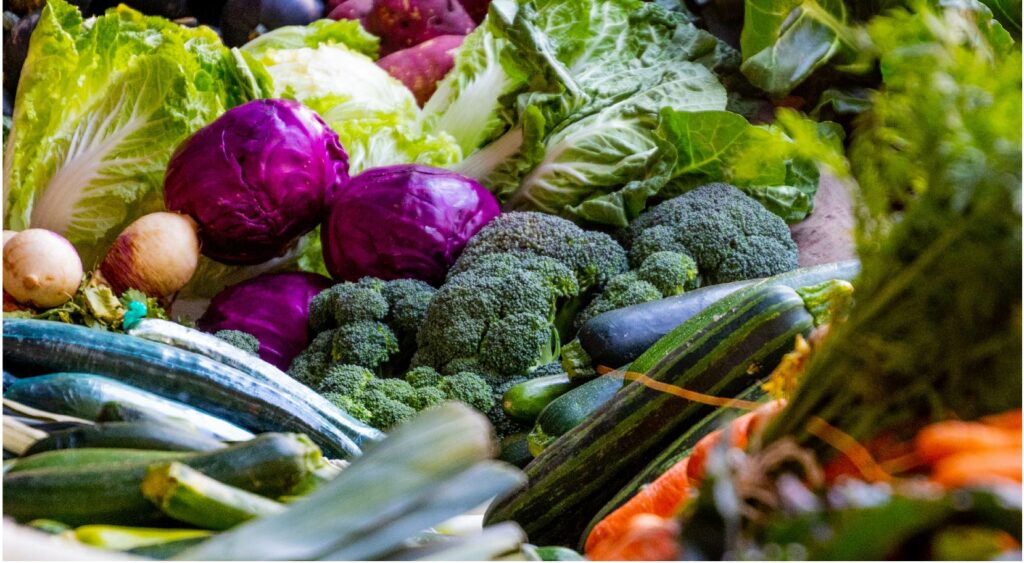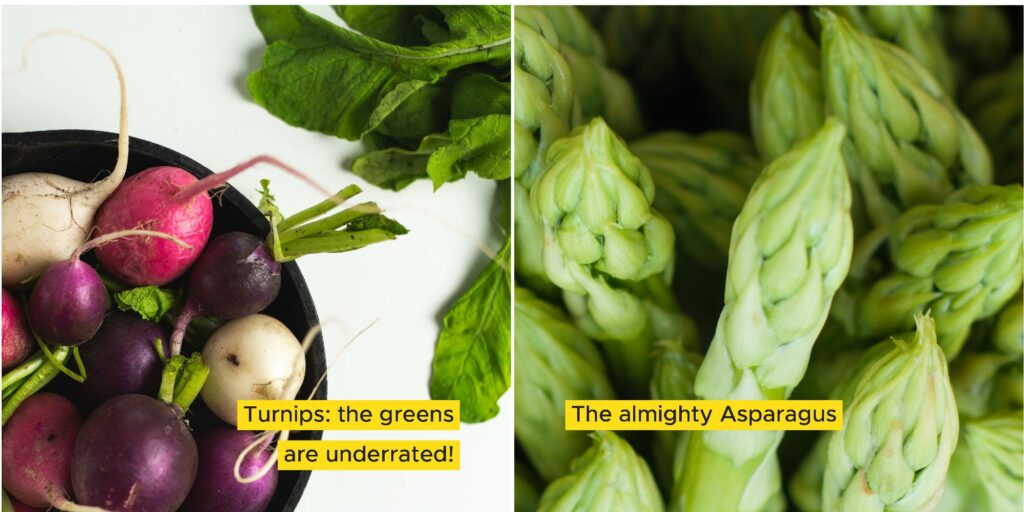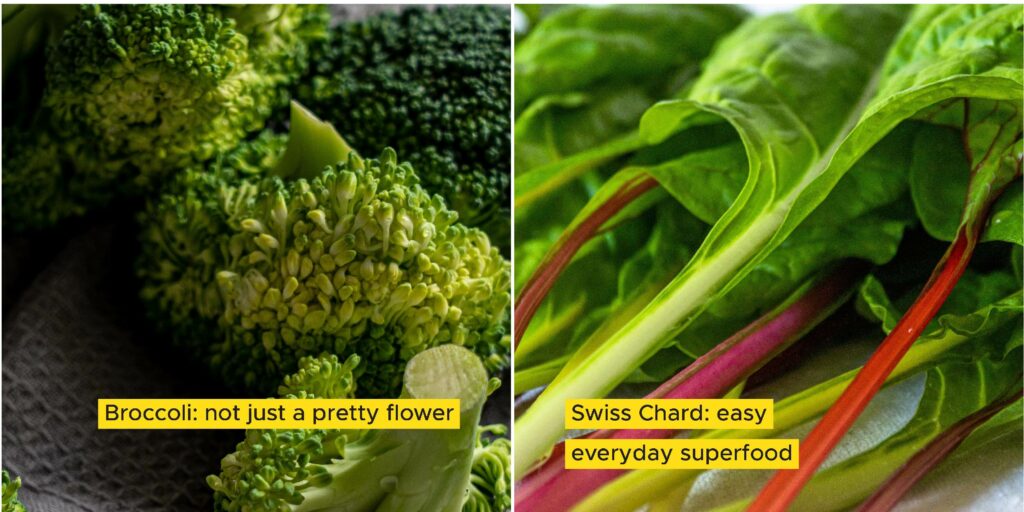CRUCIFEROUS SUPERHEROES
Cruciferous Superheroes
- Published October 11, 2023
- Category Blog, Food Bulletin Newsletter
- Tags Fiber, Food IQ, immunity, vegetables, vitamin C, vitamin K

While this newsletter focuses on holistic diets covering a range of plant-based food groups, we want to call out a superstar food group – the cruciferous vegetables! Native to temperate East Asia, these vegetables can be found around the world; Broccoli, Cabbage, Mustard, Radish, Bok Choy and many more.
These low calorie vegetables cover a range of essential nutrients to support daily body functions, and phytonutrients that boost our immunity. One of the nutrients in particular, glucosinolates, gives these veggies the characteristic pungency in aroma and bitter/spicy taste. These compounds tend to break down when chopped or under heat, so best to eat raw or very lightly cooked, to retain the benefits.
There are more than 3,000 species of cruciferous vegetables, but what is clear is that we often do not get enough in our diets!

Turnips: the greens are underrated!
The turnip provides an amazing bounty of nutrients like fibre and Vit C. What we commonly eat is the beautiful white or purple ‘root’. But did you know the leaves are edible too – they taste delicious when cooked by themselves or added to a recipe. They are also an excellent source of vitamin K, 1 cup of cooked turnip greens gives you almost 600% of your daily value! The rich green leaves are also sources of the antioxidants beta-carotene and lutein.
The almighty Asparagus
White asparagus is cultivated by reducing the plant’s exposure to light, resulting in a milder taste than green asparagus. Purple asparagus is a different variety and has more sugar, leading to a nuttier taste. Researchers have identified nearly 100 different phytonutrient compounds in asparagus. Best eaten lightly steamed, enough to cook them so they digest easier but not too much that they get soggy and wilt. A dash of lemon, salt and pepper and you don’t need anything else to enjoy their unique flavour.

Broccoli: not just a pretty flower
Broccoli is a fantastic source of vitamin K, C, B, E, chromium, folate and even omega-3 fatty acids. It also contains sulforaphane which has cardiovascular benefits and anti-cancer & tumour reduction properties. Sulforaphanes begin breaking down when the plant surface is disrupted (chewing or chopping), so cook lightly and retain some of the crunch! Either steam them a little or better yet, stir fry at high heat for a few minutes with some herbs and spices and toss into your favorite dishes.
Swiss chard: easy everyday superfood
Contrary to what its name suggests, Swiss chard is native to the coastal regions of Southern Europe. The bright red and yellow hues in Swiss chard are due to the presence of betalain. This phytochemical is present in only a few plants, but is gaining attention due to its high antioxidant activity, and ability to inhibit systemic inflammation. Chards are best eaten raw as salad or even a wrap, or lightly and quickly stir-fried in a wok, so as to retain their beautiful colors, nutrients and flavour. Toss in a wok with some ginger, garlic, sesame and soy sauce – delicious!






